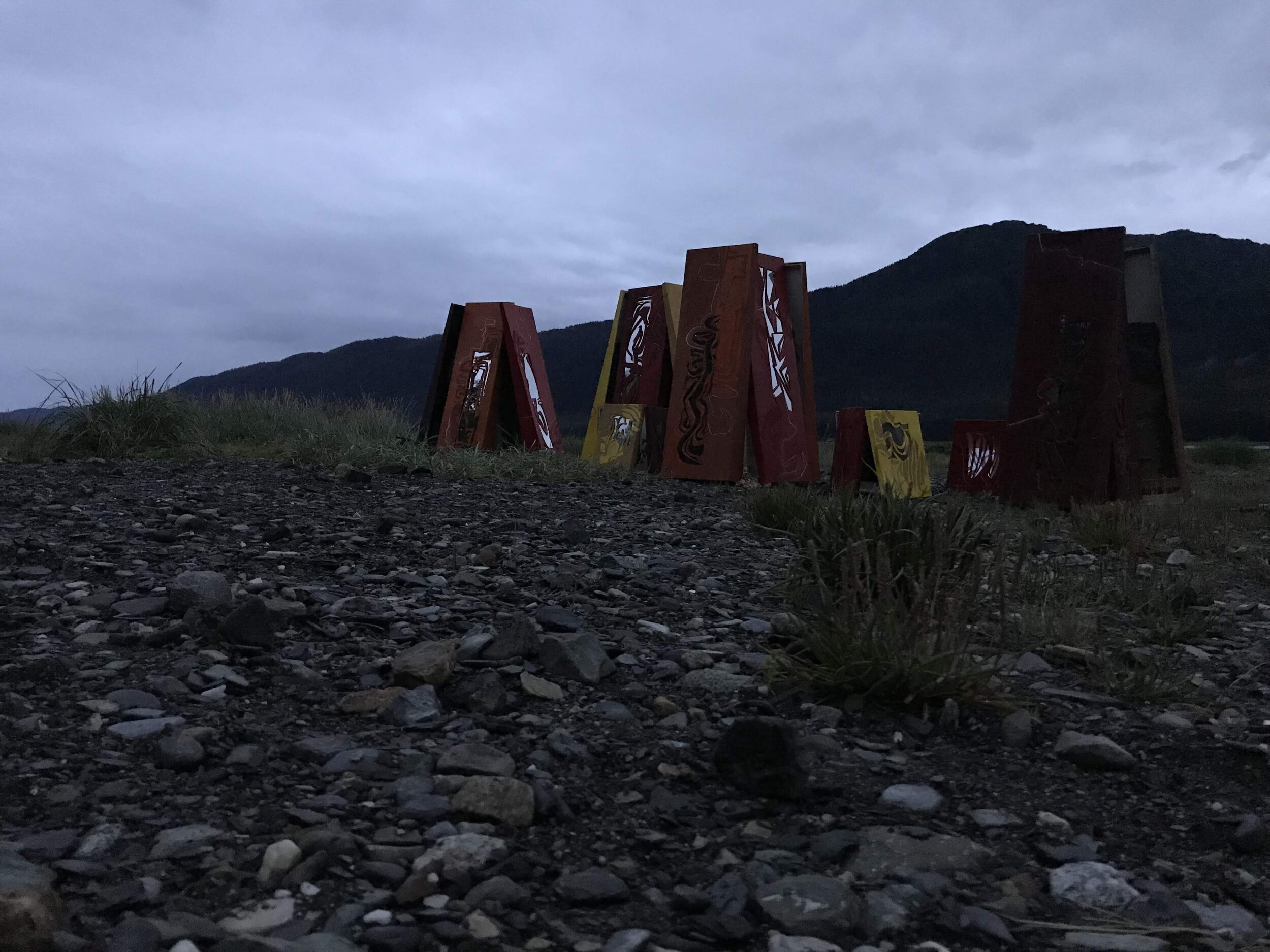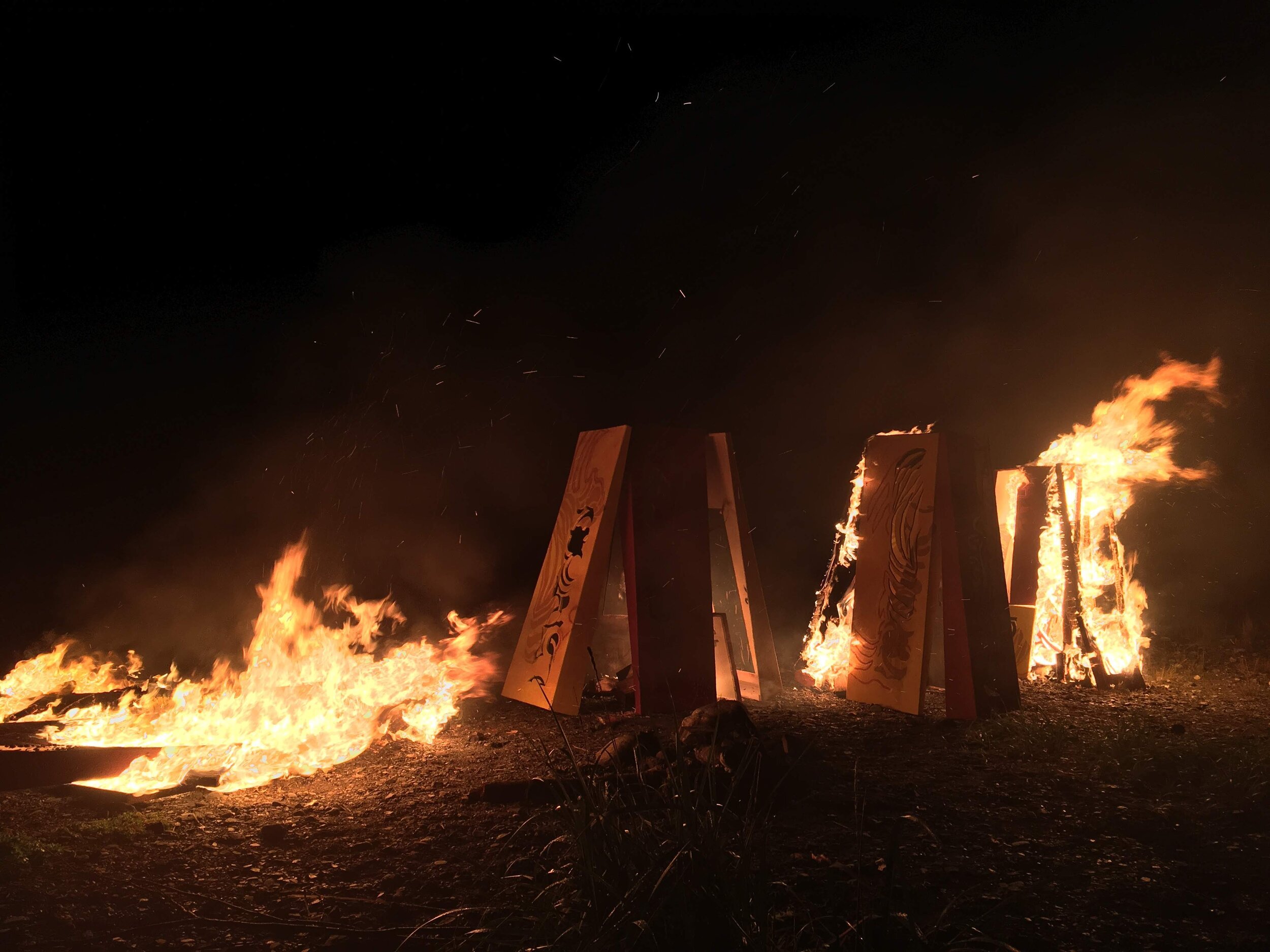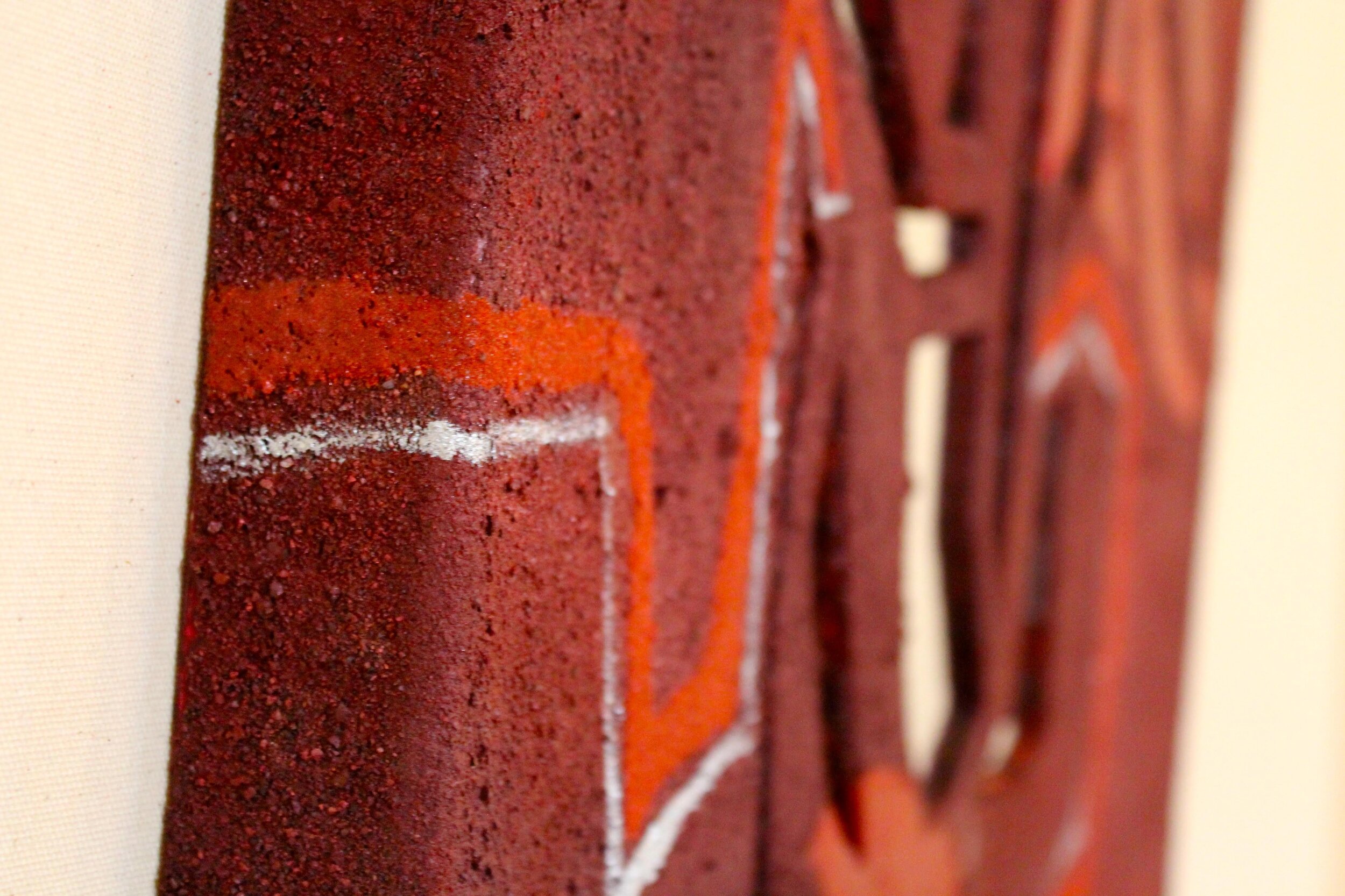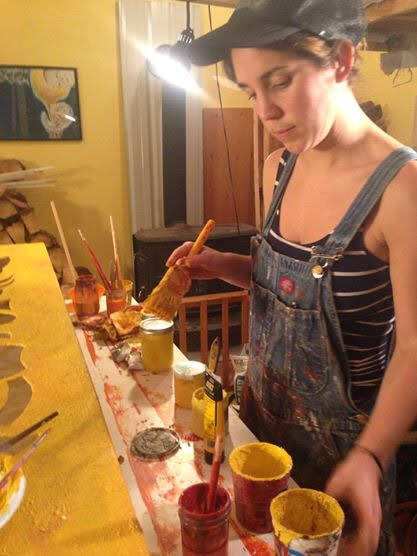Sarah Conarro
Δ > Projects > Nice-Looking
Nice-Looking
Nice-Looking is a three part piece that encompasses altering familiar spaces, embracing seasonal cycles, fulfilling personal liberation, and emphasizing the importance of community in combating seasonal depression in Juneau, AK. Spanning from the winter solstice to the summer solstice, the three parts consisted of an installation, a community gathering, and a bonfire destroying the installation pieces. The installation component commenced on the winter solstice during the darkest and coldest time of the year when the sun appears for only 6 hours a day. The artist transformed the most frequented café in downtown Juneau with the installation of floor to ceiling paintings and thirty two 8-foot tall mirrored sculptures, creating a warm color gradient throughout space. During the month of its duration, the installation process was ongoing, as every week the artist would add more sculptures and paintings to the space. As spring drew closer, the installation reached its most elaborate point, culminating with the second part to the piece: a community gathering featuring gourmet, locally-grown cuisine. For this two-night event, collaborator Julian Bozeman created a soundscape and video projections that emphasized the warm and peaceful environment created by the installation. The community came out in droves, eager to take advantage of this unique opportunity to feel warmth, light and togetherness in an otherwise cold and isolating time of year. On the invitation card the artist included a list of fluctuating emotional states in the form of nouns, verbs, and quotes. The third and final component of the piece involved the destruction of the sculptural elements on the summer solstice. The artist built a bonfire with the thirty two 6-foot tall sculptures, marking the end of the piece on the longest day of the year.
After receiving family-related news that the artist had to remain in Juneau through the winter, she devised the piece to combat her own feelings of isolation and depression. Leading up to the installation of the piece, the sculptural pieces were created with wood, sand, paint and mirror in a dilapidated construction trailer in the center of town, the only space available to the artist to make a project of this scale. Creating the pieces in this environment highlighted the feelings of isolation the artist hoped to address. Without bright interiors and community gatherings, residents of Juneau, a land-locked town with no roads in or out, can feel trapped and alone in the dark days of winter. As a sufferer of seasonal depression, the artist sought to create a piece offering two remedies of the disorder: warmth and community. Doing so in the most frequented café in the city center was integral to offering this respite to as many members of the community as possible. The weekly changes made to the piece inspired community members to frequent the space, while marking the seasonal shift from winter to spring. The second part of the piece offered a two-night gathering where community members could be together in the space at the culmination of the installation. The feeling of togetherness was palpable as attendees enjoyed relaxing and eating in the visually and aurally magical environment created by the artist and her collaborator. The piece reached its cyclical end on the summer solstice. The bonfire fell on the longest day of the year, when the sun replaced the need for substitutes. The final act not only marked the seasonal release felt at the summer solstice, but also the personal release of the artist from a place that came to represent isolation. The sculptures were the last remaining physical belongings of the artist in Juneau, and their destruction represented her liberation as she embarked on the next chapter of her life in New York City.
This project was made possible with funding from Juneau Arts and Humanities Council.
References
Thomas Hirschhorn, Helena Almeida, Orchestra III from Connections. Anni Albers. 1983.










